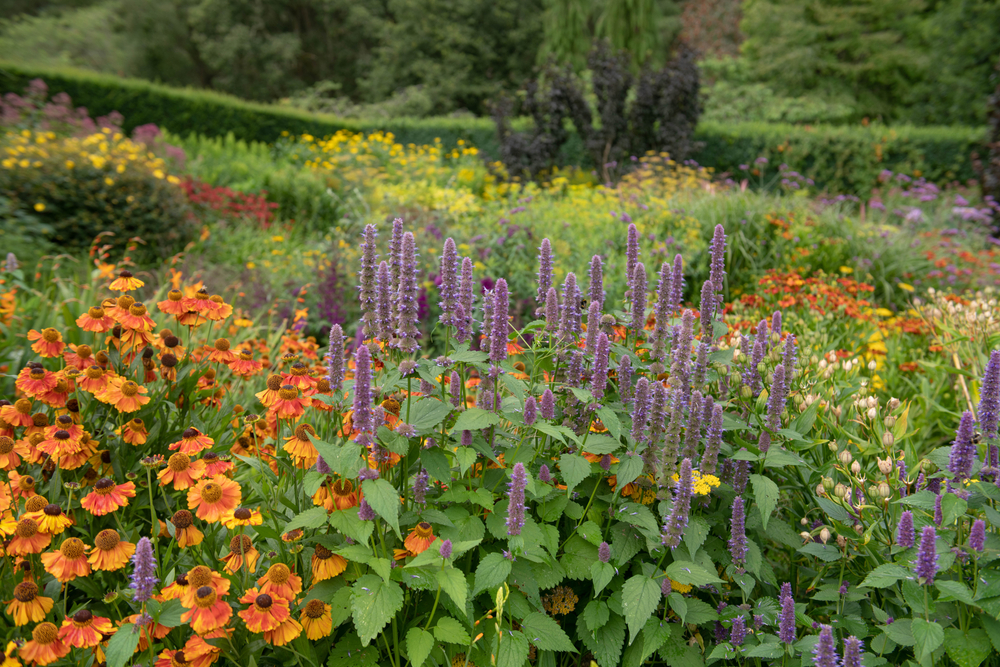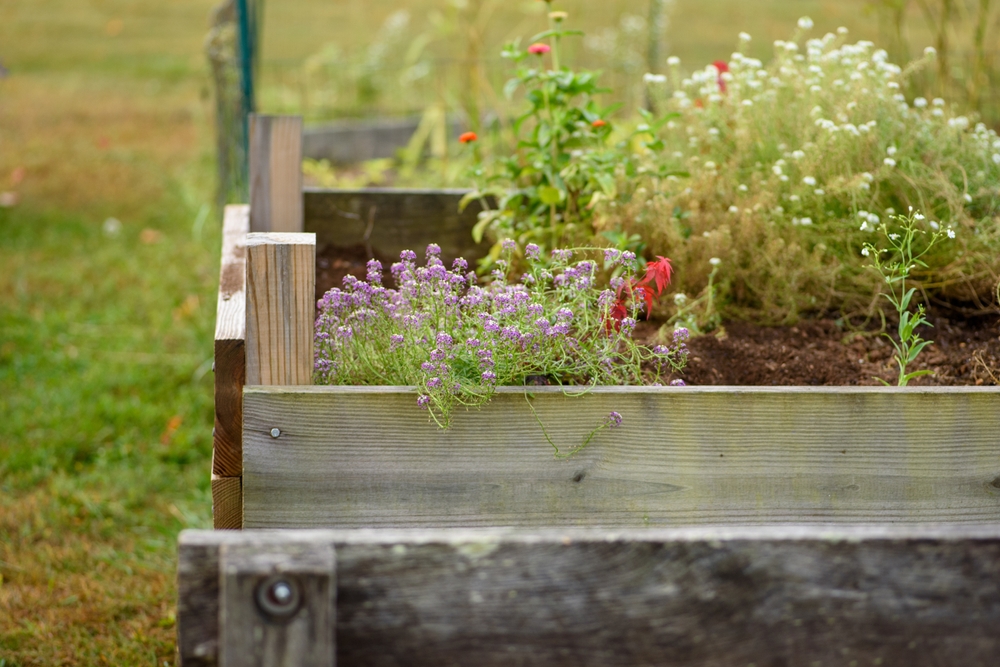
Image Source: Shutterstock.com
At first glance, a full, lush garden bed looks like the dream. Every inch of soil is covered, colors are popping, and the whole space feels alive. But wait—beneath that gorgeous greenery might be a quiet war for resources happening just below the surface. Overcrowding in perennial beds is sneaky. It starts as a sign of success—healthy growth, happy plants—but before long, your garden can start choking itself from the inside out.
If you’ve ever wondered why your once-flourishing flower bed suddenly looks tired, patchy, or less colorful, overcrowding could be the culprit.
When Growth Becomes a Problem
Perennials are like the overachievers of the plant world. They come back year after year, grow stronger each season, and spread—sometimes a little too enthusiastically. What begins as a balanced planting arrangement can quickly turn into a leafy mosh pit. When plants grow too close together, their roots compete for water, nutrients, and oxygen, while their leaves battle for sunlight. You’ll start to see smaller blooms, weaker stems, and plants that just look… exhausted. That’s your first sign that growth has gone from “thriving” to “overwhelming.”
Signs Your Perennials Are Elbowing Each Other
You don’t need a horticulture degree to spot overcrowding. One of the easiest giveaways is when plants start growing in odd, stretched-out directions—as if they’re leaning over to steal a bit of sunlight from their neighbors. Flowers that once bloomed boldly might become sparse or undersized. You might even notice yellowing leaves near the bottom of the plants or dead patches where airflow is poor. Essentially, your once-stunning flower bed starts looking more like an overbooked concert crowd—chaotic and gasping for space.
The Root of the Problem—Literally
The most dramatic battles happen underground. When roots from neighboring plants start tangling together, it’s like a constant tug-of-war for moisture and nutrients. Deep-rooted varieties will often win, leaving shallow-rooted plants stressed and stunted. You’ll see the results on the surface—wilting, slow growth, or an overall “meh” vibe even when you’re watering regularly. If you ever dig into a perennial bed and find a dense, knotted mat of roots instead of loose, crumbly soil, that’s nature’s way of telling you the plants are suffocating each other.
Fewer Blooms, More Foliage
Another subtle sign of overcrowding is when your plants shift their focus from flowers to foliage. At first, you’ll notice fewer buds forming, or blooms that fade quickly. The plants are redirecting their energy just to survive, prioritizing leaf growth over producing flowers. It’s their equivalent of switching from “look at me!” mode to “please let me breathe” mode. When you start seeing leaves but missing color, overcrowding is almost always to blame—and it’s time for a little intervention.
Airflow: The Hidden Hero of Healthy Beds
Airflow might sound boring, but in the world of perennials, it’s crucial. Crowded beds trap humidity, creating the perfect environment for fungal diseases, powdery mildew, and rot. If your plants always seem damp or you spot white fuzz on the leaves, poor air circulation is likely the issue. Overcrowding also makes it harder for dew and rainwater to evaporate, which can encourage pests like slugs and aphids. A well-spaced bed not only looks better—it breathes better, too.
When Your Perennials Start Playing Musical Chairs
If some plants seem to be migrating—popping up in unexpected spots or creeping into their neighbors’ territory—it’s another sign of overcrowding. Perennials like daylilies, hostas, and irises spread through rhizomes or underground runners, which can quickly take over a bed. What starts as one charming clump can turn into an invasive sprawl within a season or two. When plants begin pushing others out of their original space, it’s time for a little tough love and reorganization. Remember: even the prettiest plants can become bullies if left unchecked.
Soil That’s Seen Better Days
Healthy soil is the backbone of any perennial bed, but overcrowding depletes it fast. With too many root systems drawing from the same limited supply, even rich soil becomes nutrient-poor over time. You might notice your once-dark, loamy soil turning pale and compacted. Water starts pooling on the surface instead of soaking in. When that happens, your plants are essentially dining on leftovers—and nobody thrives on scraps. It’s your cue to divide, replant, and give your soil (and your plants) a chance to recover.

Image Source: Shutterstock.com
The “Shrinking” Effect
Have your prized perennials stopped growing to their usual size? That’s another telltale sign. Overcrowded plants can’t expand properly, so they end up smaller each year. This shrinking effect can sneak up on you—you might think your plants are just having an “off season,” but what they really need is breathing room. Once you separate and replant them, they’ll often bounce back to full size within a season or two. It’s like sending them on a spa retreat—less competition, more vitality.
When to Step in and Thin Things Out
So, when’s the right time to intervene? The best window for dividing perennials is usually in early spring or early fall when the weather is cooler and growth is slower. You’ll want to gently dig up the crowded clumps, tease apart the root systems, and replant the healthiest sections with plenty of space between them. It sounds like a lot of work, but your plants will thank you by rewarding you with stronger growth and more vibrant blooms. Think of it as giving your garden a little breathing space—and a second wind.
How to Keep Crowding from Coming Back
Once you’ve tackled the overcrowding issue, the goal is to keep it from creeping back. Make it a habit to reassess your perennial beds every couple of seasons. Plants grow, spread, and sometimes surprise you by popping up where they weren’t invited. Regular pruning, dividing, and rotating can help maintain balance. Treat your garden like a well-managed team—everyone needs room to shine, but no one should dominate the entire field.
Give Your Garden the Space to Shine
Overcrowding in perennial beds isn’t just a cosmetic issue—it’s a health problem for your garden. When too many plants compete for the same small patch of soil, nobody wins. But once you recognize the signs—fewer blooms, tangled roots, droopy leaves—you can step in, make some space, and bring your garden back to life. Dividing and replanting may feel like tough love, but it’s one of the best things you can do for long-term beauty and balance.
Have you ever dealt with overcrowded perennials? Share your garden stories, tips, or “before and after” moments in the comments below.
You May Also Like…
5 Perennials You Should Never Cut Back Now
Why Mulching Too Early Can Damage Perennials
How to Spot Perennials That Need Dividing Now
10 Flowers to Deadhead for Extra Fall Blooms
7 Fall Flowers That Outshine Summer Blooms
Leave a Reply